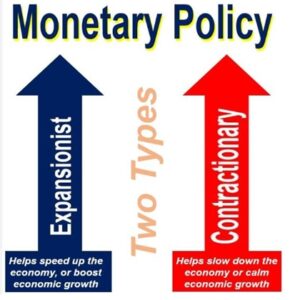RBI’s cash reserve stunner was a V3R prod for banks
Relevance
- GS Paper 3 Indian Economy and issues relating to planning, mobilization, of resources, growth, development, and employment.
- Inclusive growth and issues arising from it.
- Tags: #monetorypolicy #ICRR #RBI #repo #currentaffairs #upsc
Why in the News?
RBI to phase out Incremental Cash Reserve Ratio.
The Reserve Bank of India (RBI) has continually demonstrated its capacity to employ unconventional monetary instruments to address economic challenges. There was, for instance, the innovative Standing Deposit Facility (SDF) introduced to absorb overnight liquidity without involving government securities (GSecs), which made it better than its overnight reverse repo window.
Among these, the incremental cash reserve ratio (ICRR) recently emerged as a potent tool. This article delves into the significance of this move and its implications for banks and liquidity management.
The Resurgence of ICRR:
- The ICRR, a long-forgotten monetary policy tool, made a remarkable comeback. Initially imposed during demonetization in November 2016 to address the surge in bank deposits A 100% ICRR was imposed, it was reinstated for a different purpose – as a regulatory instrument for unique circumstances.
A different approach to liquidity management.
- The market found itself caught off guard when the Reserve Bank of India (RBI) unexpectedly opted for a different approach to liquidity management. It had been widely believed that RBI would rely on its variable rate repo (V2R) and variable reverse repo rate (V3R) auctions, a strategy it had emphasized repeatedly as part of its efforts to steer liquidity.
- The V2R auctions were designed to inject liquidity into the system, while the V3R auctions were intended to absorb it, with tenures extending up to 28 days.
- These two tools were considered quite innovative, representing advancements over the conventional open market operations (OMOs).
ICRR as a Signalling Mechanism
- The ICRR was seen as a strong signal from RBI, indicating its dissatisfaction with banks’ response to V3R auctions.
- Despite liquidity surpluses, banks hesitated to participate in longer-duration V3R auctions because locking funds for extended periods could lead to higher borrowing costs during sudden liquidity shortages.
- RBI’s decision to impose ICRR effectively immobilized ₹1 trillion, acting as a warning to banks to align with the central bank’s liquidity management strategy.
ICRR’s Impact on Liquidity
- The ICRR implementation resulted in a significant reduction of surplus liquidity, falling from over ₹2 trillion daily to less than ₹1 trillion.
- In some instances, it even pushed the liquidity into deficit territory, forcing banks to borrow from the marginal standing facility (MSF) window.
ICRR Withdrawal and Continued V3R Weakness
- As liquidity conditions normalized, the RBI announced the phased withdrawal of ICRR.
- However, even after this announcement, V3R auctions for 28 days continued to receive weak responses. Banks were still cautious about deploying their lower surpluses due to impending tax payments.
Addressing Inflation Concerns
- While some argue that excess liquidity can fuel inflation, others contest this claim, pointing out that funds invested in tools like the SDF or shorter-duration V3R auctions do not generate credit. Nevertheless, sentiment can be influenced by liquidity surpluses, potentially affecting inflationary expectations.
Key Takeaways
- Beyond traditional open market operations (OMOs) and V3R auctions, the RBI has showcased the use of ICRR as a selective liquidity management tool.
- Banks are advised to consider longer-term V3R auctions, where they can earn interest, as opposed to ICRR with zero returns.
- Expect the RBI to employ temporary measures to manage liquidity conditions that do not necessitate OMOs. An ICRR of a temporary nature can be a viable option.
Conclusion
RBI’s tactical use of the ICRR underscores its commitment to employing a diverse set of tools to manage monetary conditions effectively. Banks should stay attuned to these developments, making informed decisions regarding their liquidity management strategies.
| Monetary Policy Framework
· Definition: In 2016, the RBI Act was amended to provide a legislative mandate for the central bank to operate the country’s monetary policy framework. · Objective: The framework’s goal is to set the policy (repo) rate based on an assessment of the current macroeconomic situation, while also adjusting liquidity conditions to align money market rates with or around the repo rate. · Importance of Repo Rate: Changes in the repo rate have a cascading effect, influencing the entire financial system and, consequently, aggregate demand. This makes the repo rate a key determinant of inflation and economic growth. Monetary Policy Committee (MPC) · Formation: The amended RBI Act of 1934 empowers the central government to establish a six-member Monetary Policy Committee (MPC). · Objective: The MPC’s primary responsibility is to determine the Policy Rate needed to achieve the inflation target as specified in the Act. · Composition: The MPC consists of six members, including the RBI Governor (as the ex officio chairperson), the Deputy Governor in charge of monetary policy, a nominee from the Central Board of the RBI, and three individuals appointed by the central government based on their competence, integrity, and expertise in economics, banking, finance, or monetary policy. Instruments of Monetary Policy\ · Repo Rate: The primary policy rate used to influence borrowing and lending rates in the economy. · Standing Deposit Facility (SDF) Rate: A tool to absorb overnight liquidity without government securities involvement. · Marginal Standing Facility (MSF) Rate: Offers a facility for banks to borrow funds during emergencies. · Liquidity Adjustment Facility (LAF): The primary liquidity management tool for regulating short-term interest rates. · LAF Corridor: The corridor created by the repo rate and reverse repo rate, which defines the operational rate framework. · Reverse Repo Rate: The rate at which banks park excess funds with the central bank. · Bank Rate: The rate at which RBI lends to commercial banks. · Cash Reserve Ratio (CRR): The portion of bank deposits that banks must keep with the central bank. · Statutory Liquidity Ratio (SLR): The minimum percentage of deposits that banks must invest in government securities. · Open Market Operations (OMOs): Used for buying or selling government securities to manage liquidity in the banking system.
|
Sources: Livemint, Business Outlook.
Mains Question
“Discuss the Reserve Bank of India’s unconventional liquidity management tools, highlighting the recent deployment of the incremental cash reserve ratio (ICRR) and its impact on the banking sector.” 250words.





